
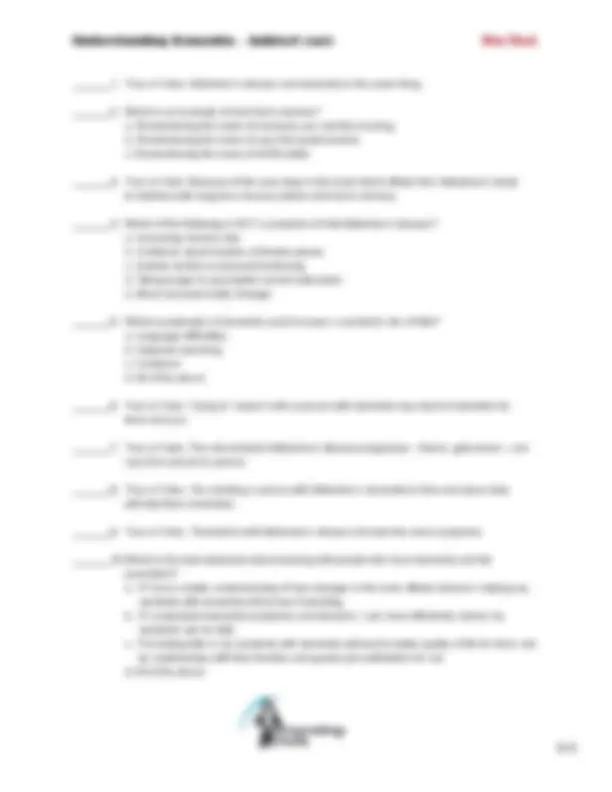

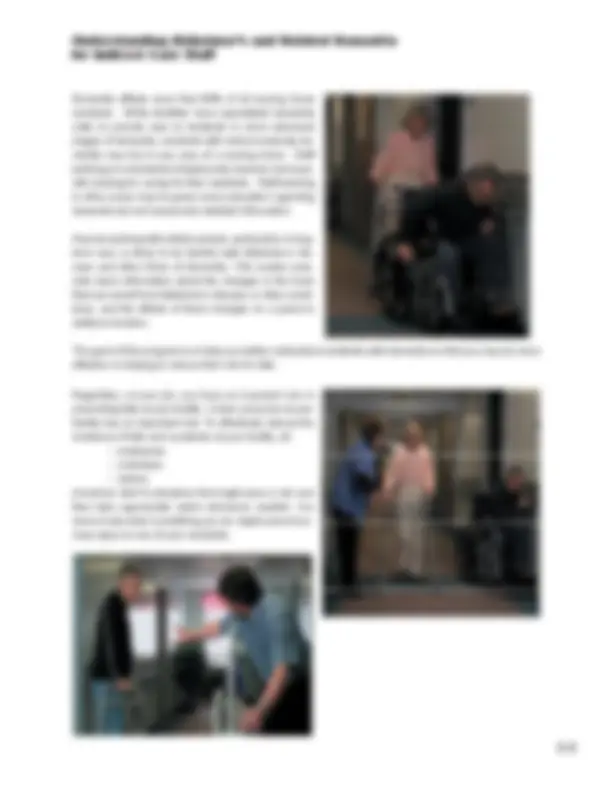
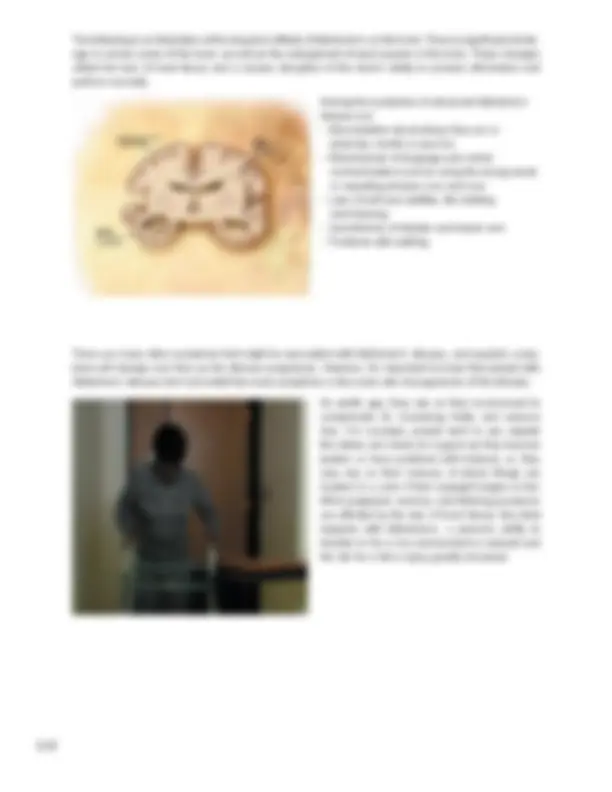
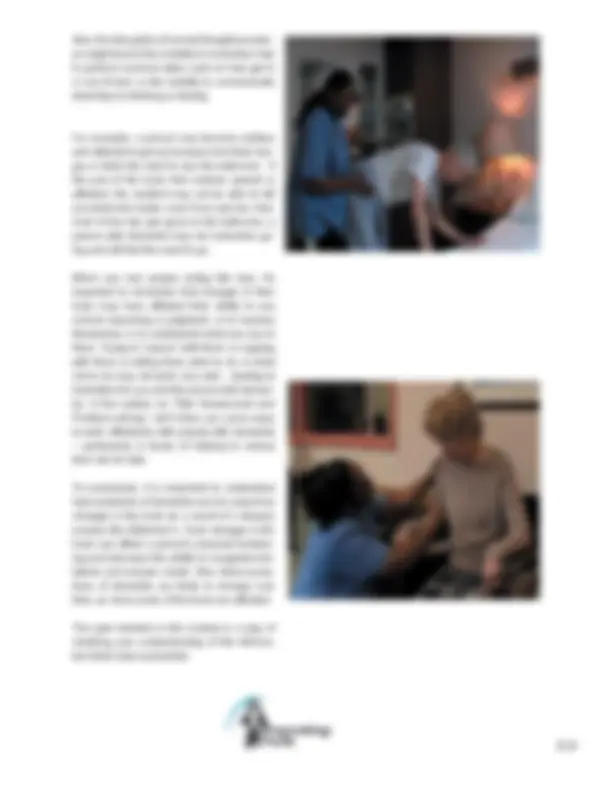

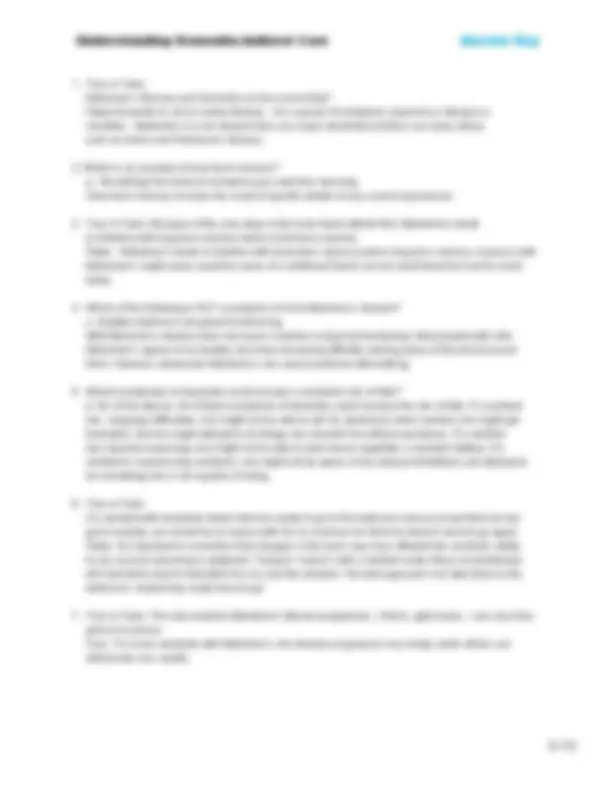
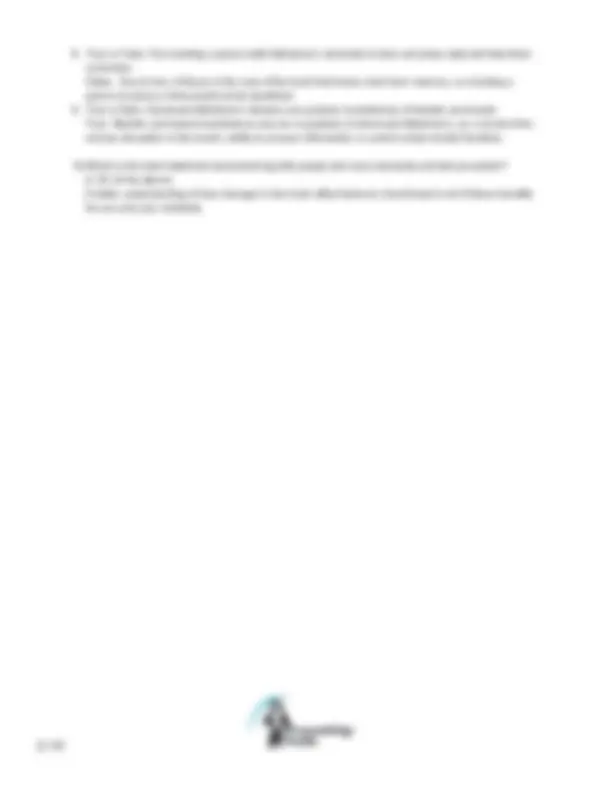
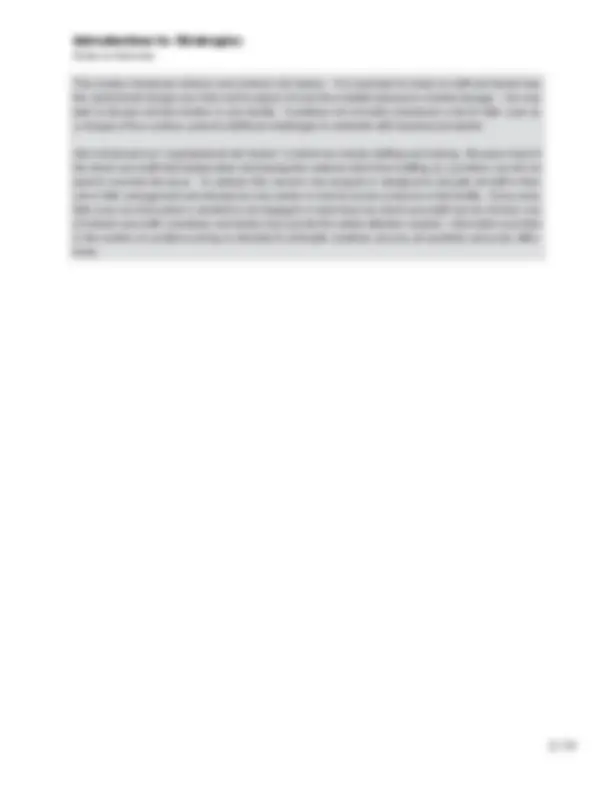


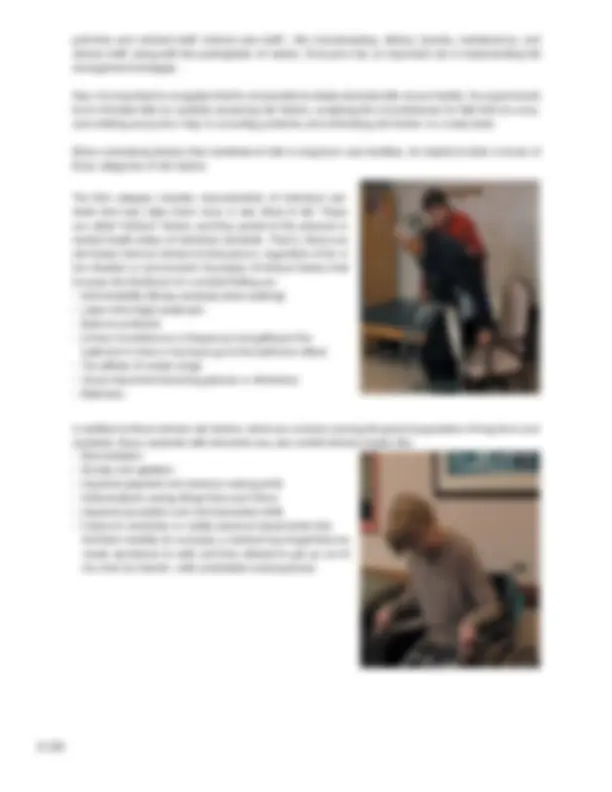
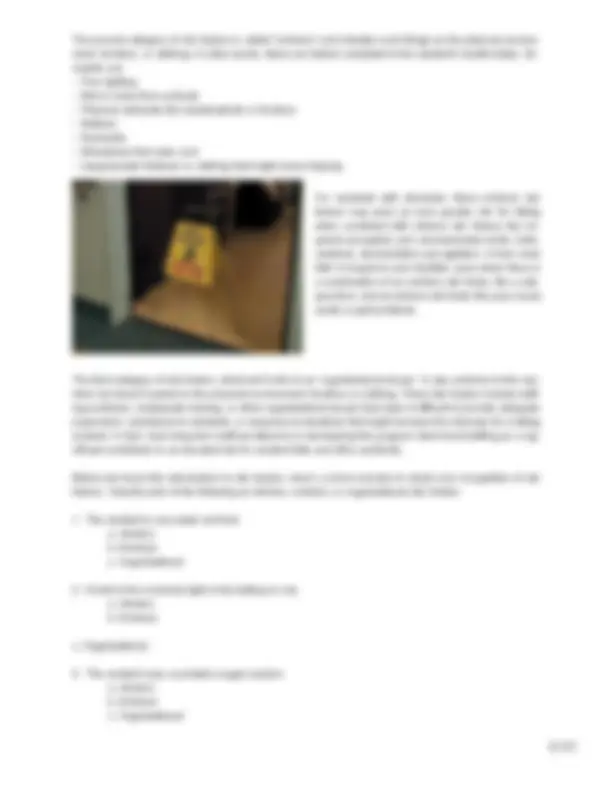
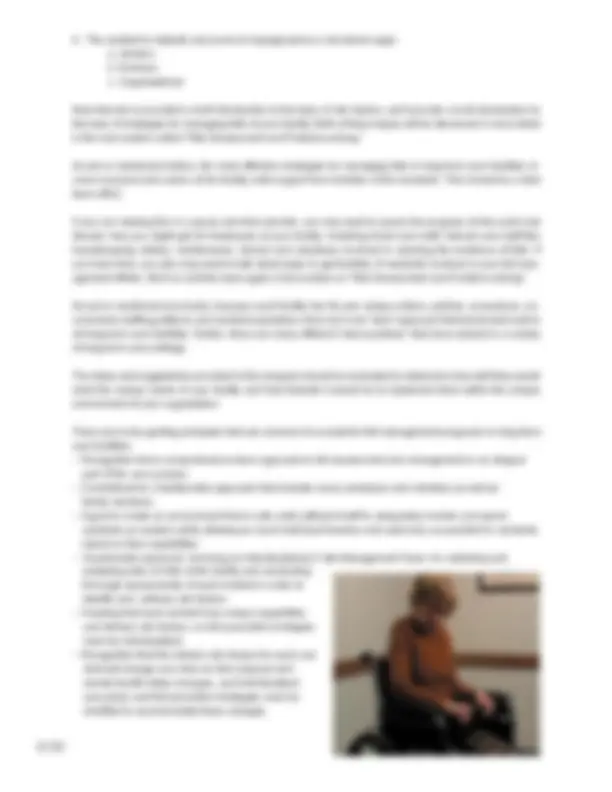
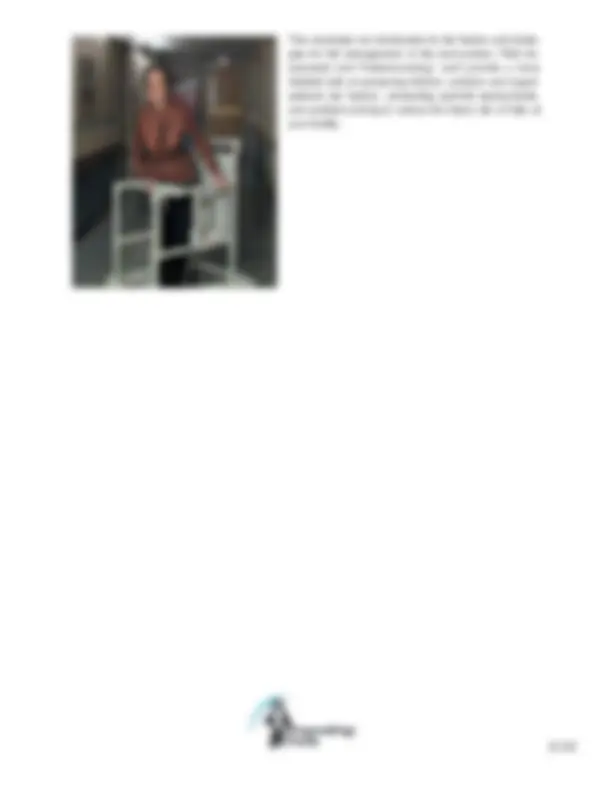

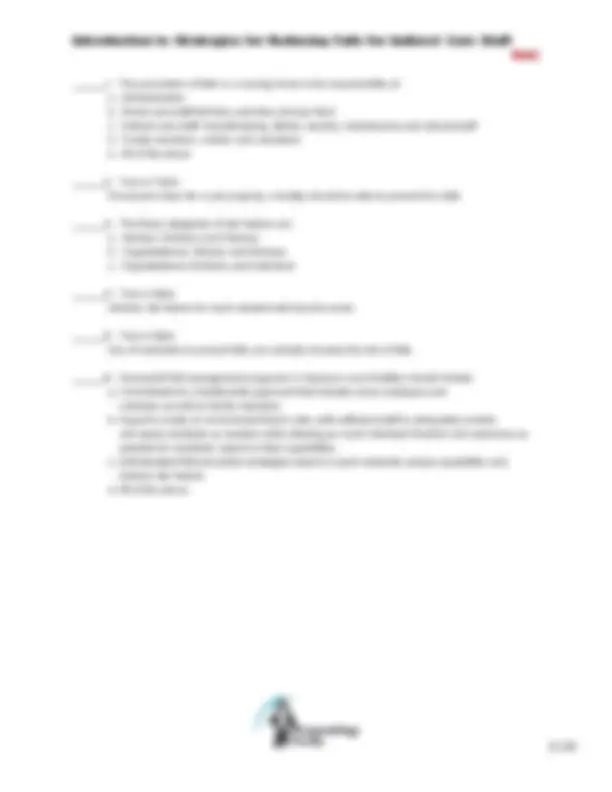

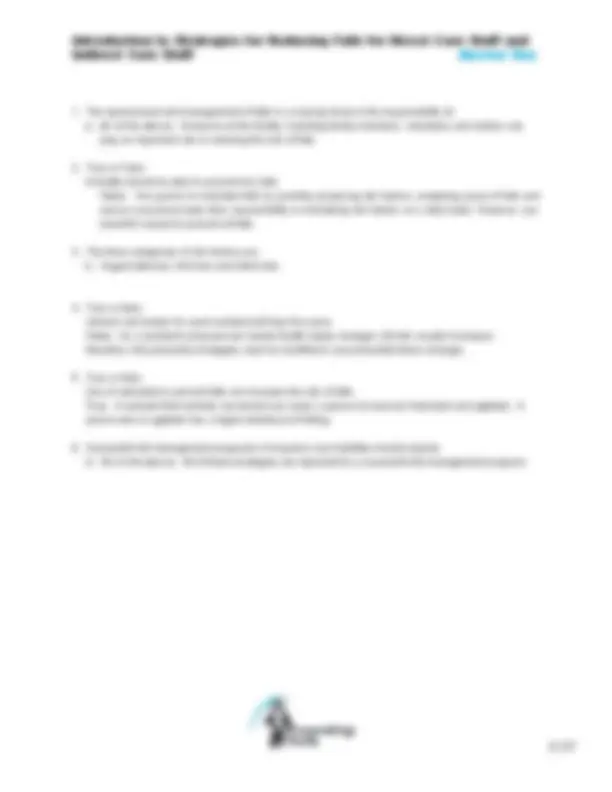

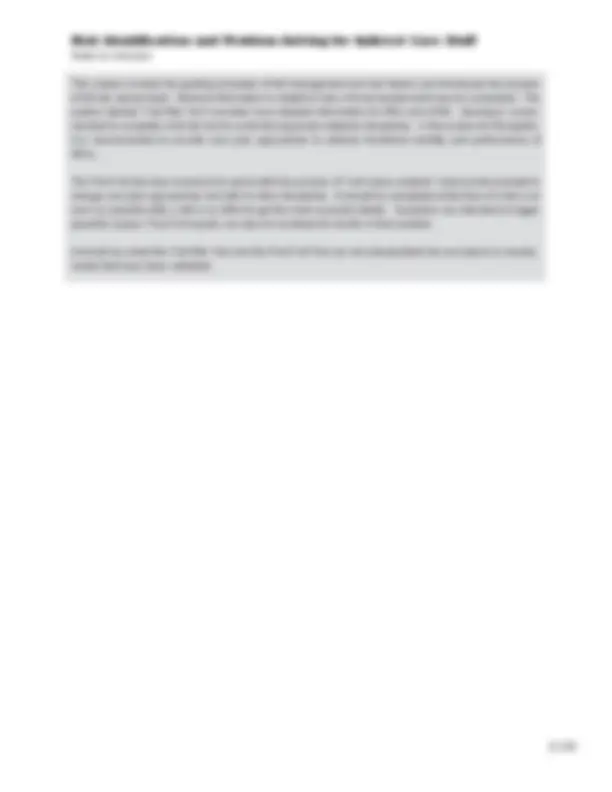

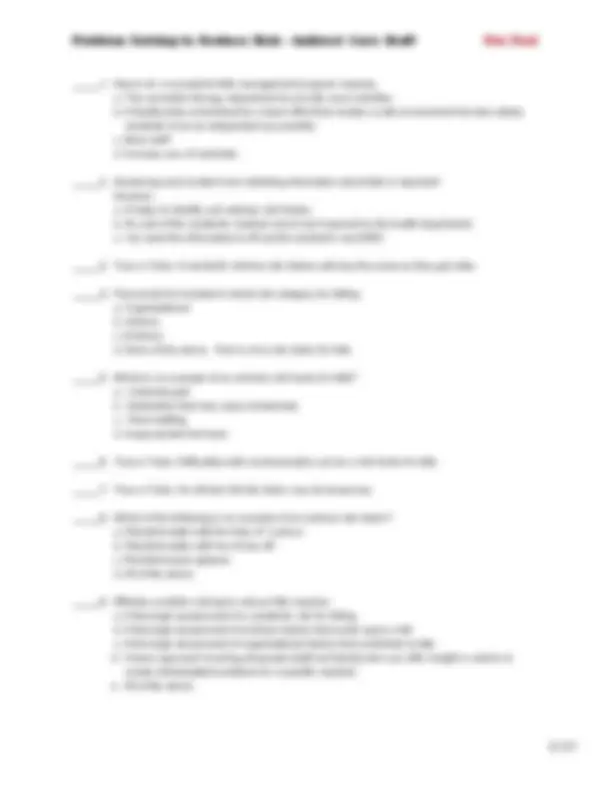
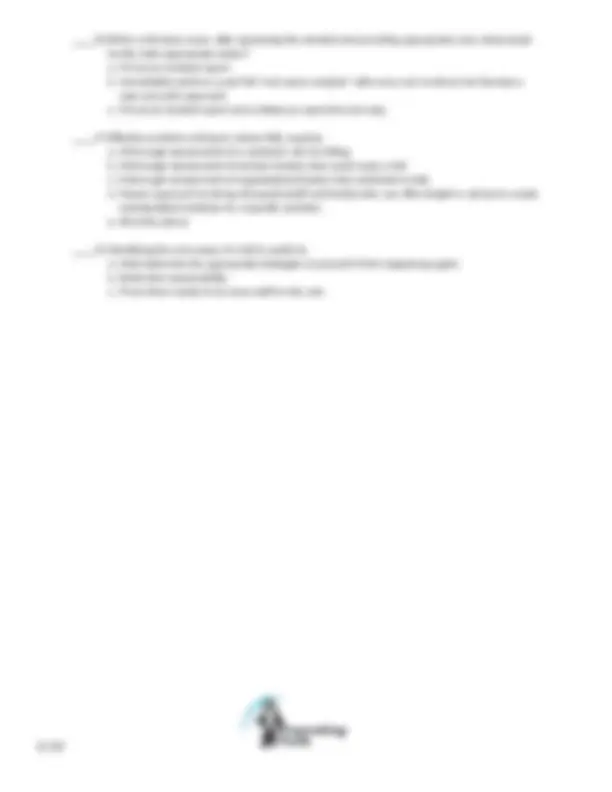
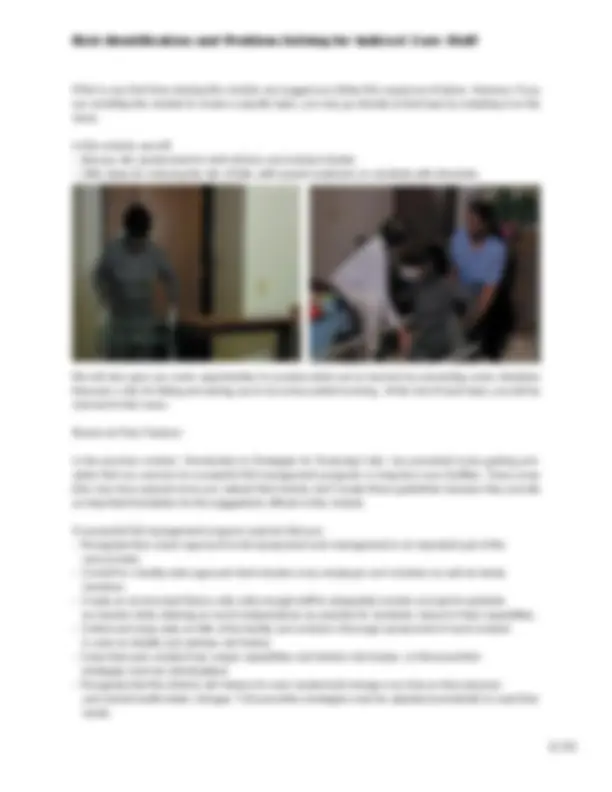
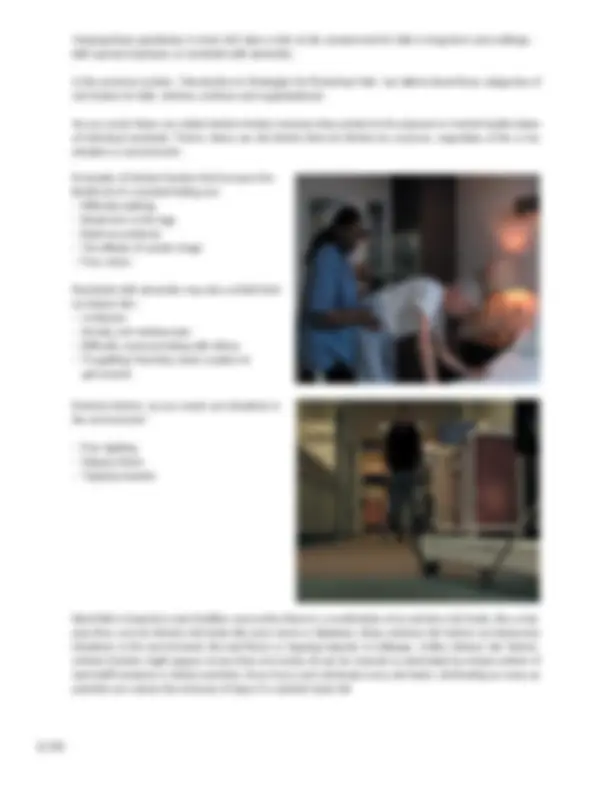
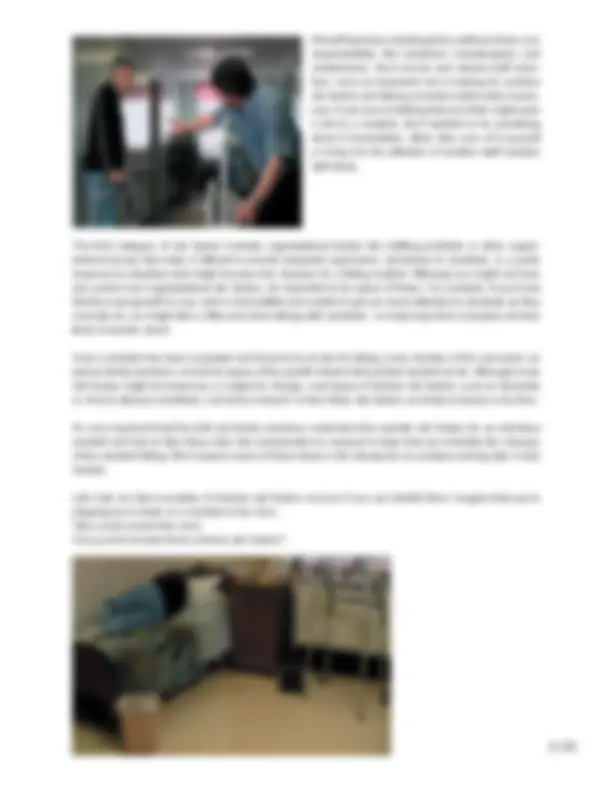
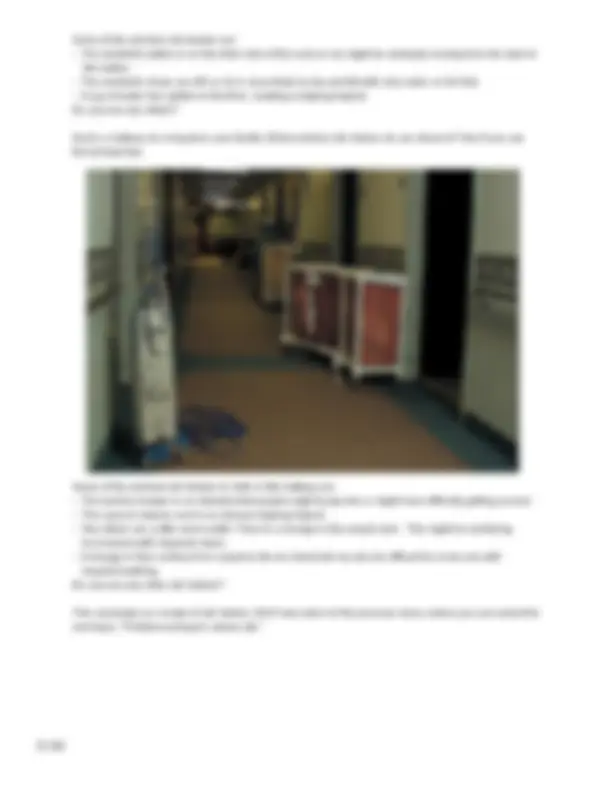
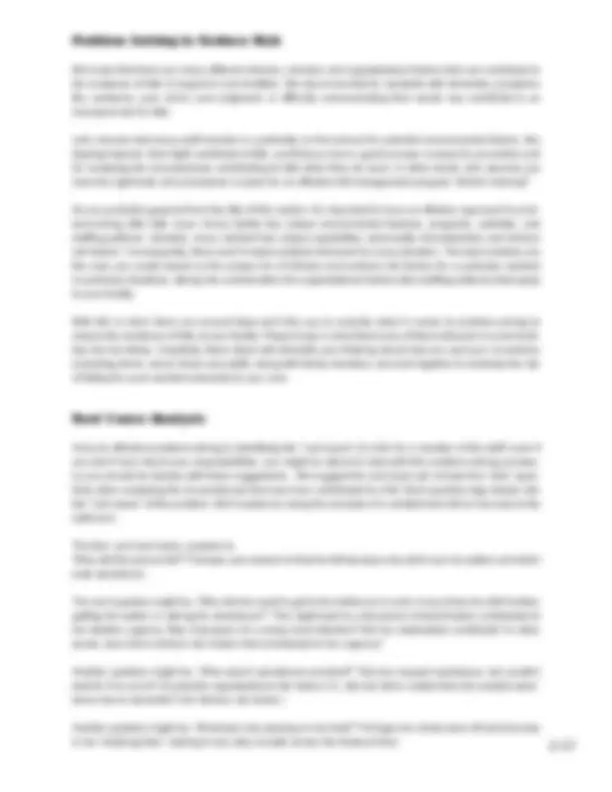
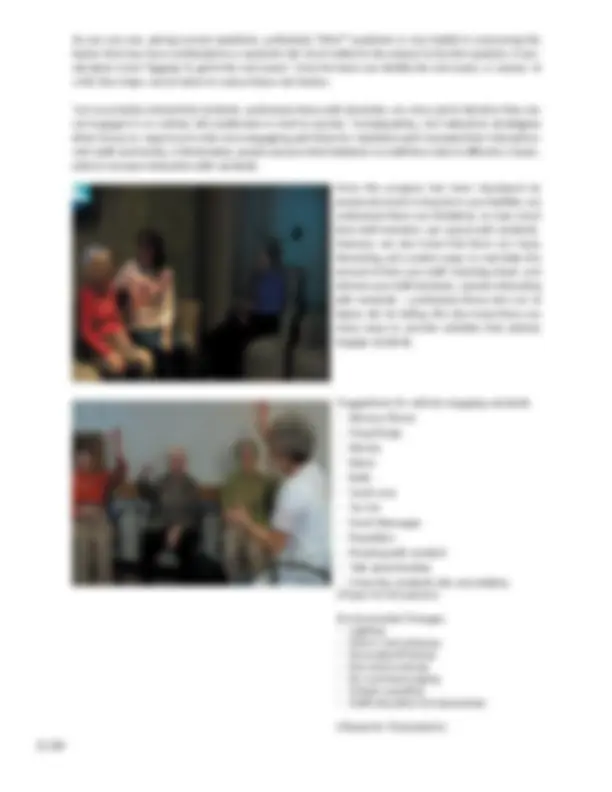


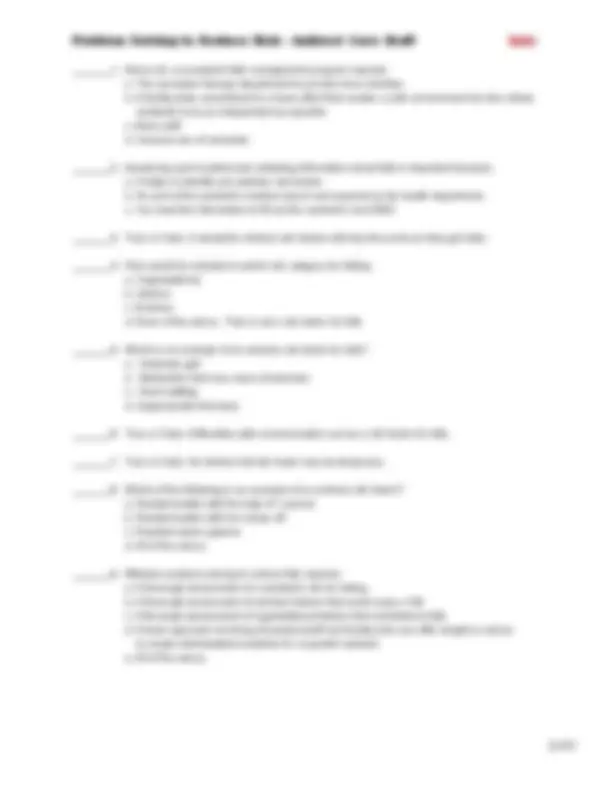
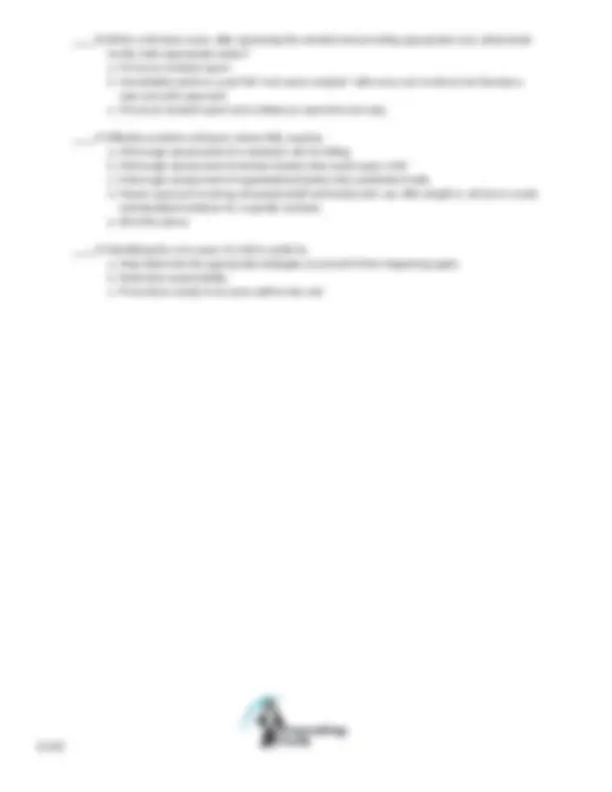
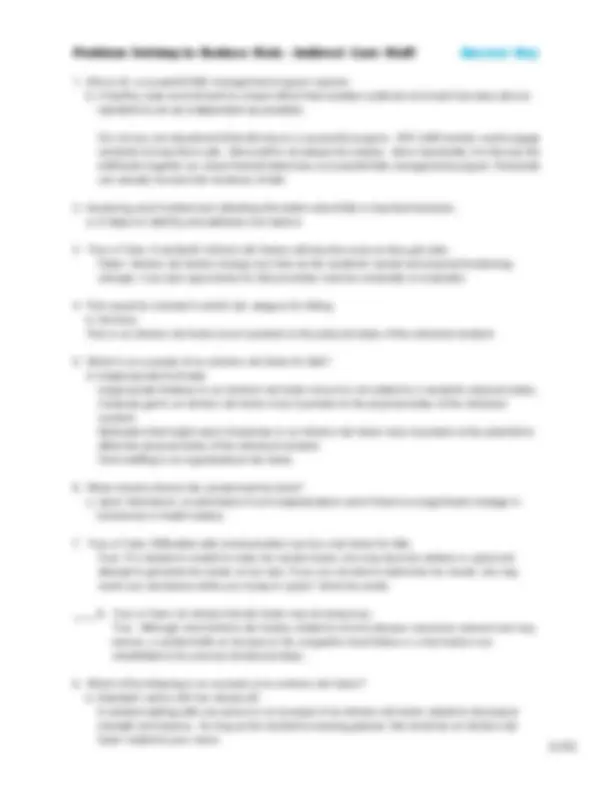
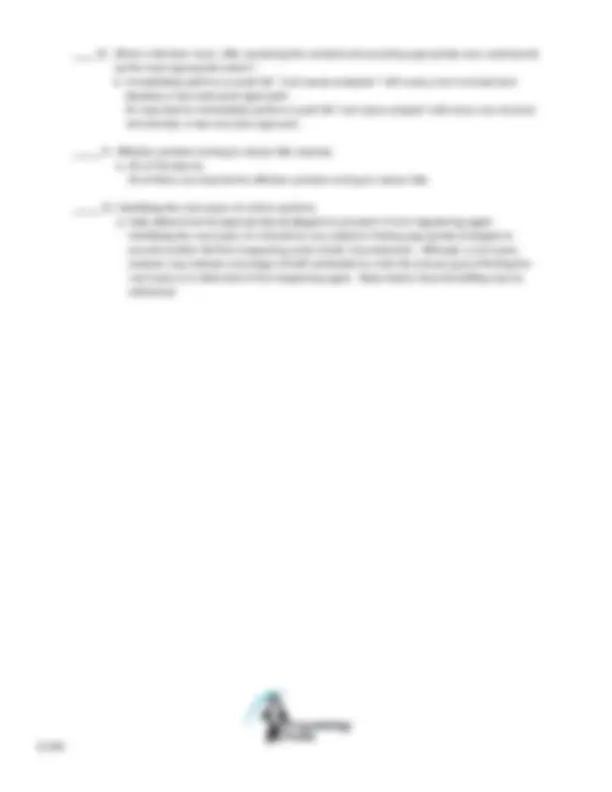
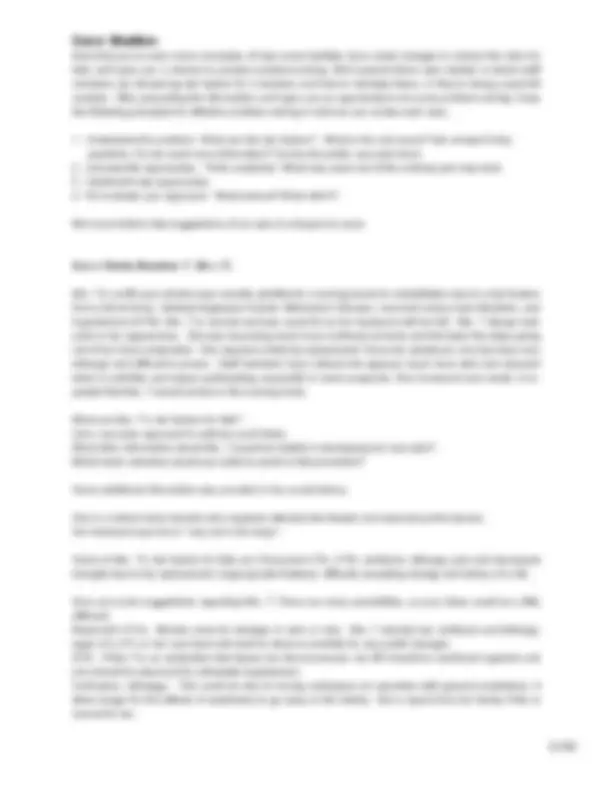
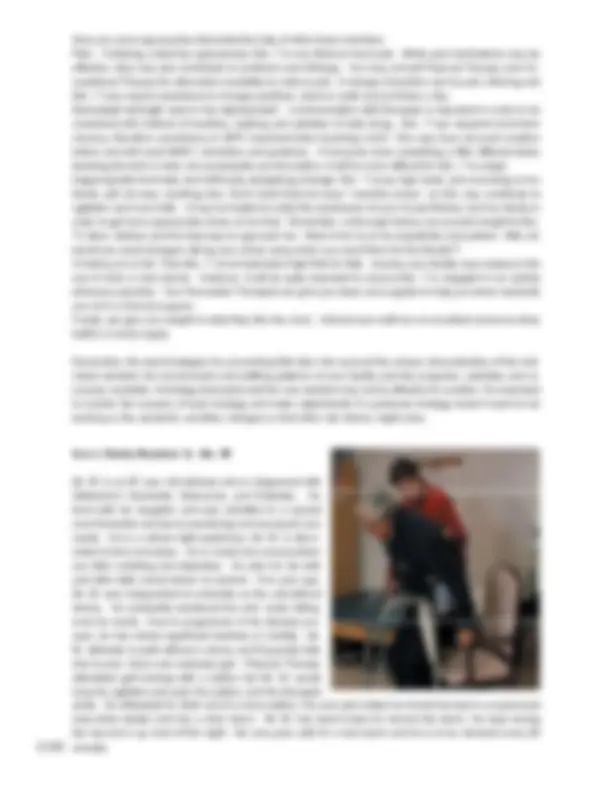
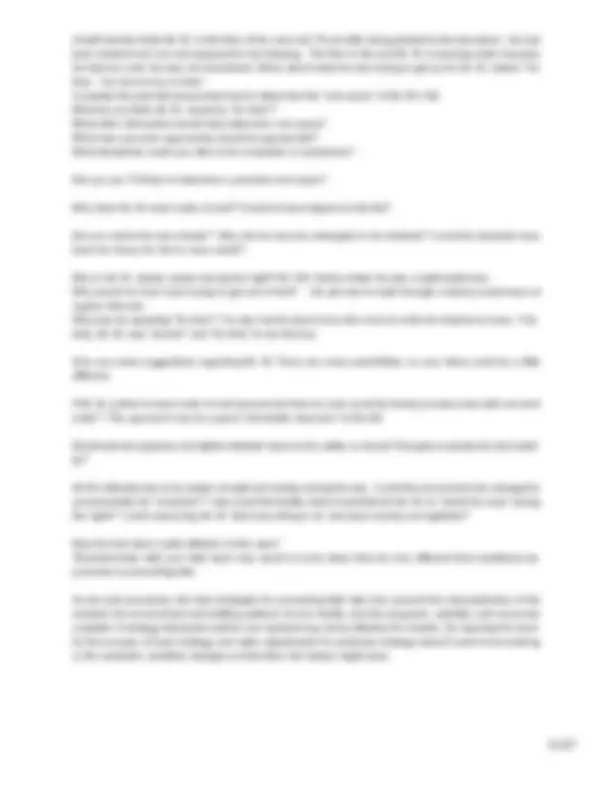
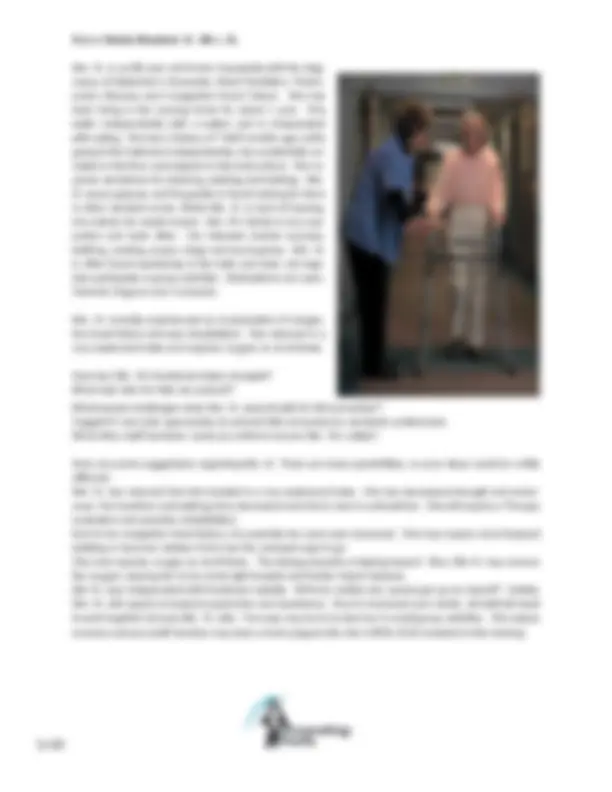


Study with the several resources on Docsity

Earn points by helping other students or get them with a premium plan


Prepare for your exams
Study with the several resources on Docsity

Earn points to download
Earn points by helping other students or get them with a premium plan
Community
Ask the community for help and clear up your study doubts
Discover the best universities in your country according to Docsity users
Free resources
Download our free guides on studying techniques, anxiety management strategies, and thesis advice from Docsity tutors
An overview of risk factors for falls in long-term care facilities, with a special focus on residents with dementia. It introduces the concept of intrinsic, extrinsic, and organizational risk factors and discusses strategies for managing falls. The document also includes exercises and case studies to help readers identify and address risk factors.
What you will learn
Typology: Slides
1 / 48

This page cannot be seen from the preview
Don't miss anything!









































Notes to Instructor Topics to emphasize and discuss All staff members, volunteers and family members have some roll in fall prevention. While direct care car- ries most of the responsibility, discussion may center on how indirect care staff/volunteers may be used and how to foster positive family interaction. It is also important for the staff to understand the changes in residents with dementias, both physical and mental. While dementias are generally progressive and it is inevitable that a person’s abilities will decline, the care and interactions with staff and family greatly impact quality of life. It is important to monitor and report changes of a resident. Since a mixture of people see a resident at various times, someone may see something out of the ordinary that others would not. Timely discovery of a change or decline may facilitate interventions that could prevent a fall. Secondly, it is important to understand impairments in reasoning, judgment and communication should not be interpreted as the resident’s behavior is intentional. We use the example of a resident insisting they have to use the bathroom repeatedly. Although it is tempting to repeatedly tell them they just went, perhaps they have an unmet need they cannot communicate. Discussion may center on ways to determine what the resident is trying to express and it may take several different approaches to find it.
Dementia affects more than 60% of all nursing home residents. While facilities have specialized dementia units to provide care to residents in more advanced stages of dementia, residents with mild to moderate de- mentia may live in any area of a nursing home. Staff working on a dementia unit generally receives more spe- cifi c training for caring for their residents. Staff working in other areas may be given some education regarding dementia but not necessarily detailed information. Anyone working with elderly people, particularly in long- term care, is likely to be familiar with Alzheimer’s dis- ease and other forms of dementia. This section pres- ents basic information about the changes in the brain that can result from Alzheimer’s disease or other condi- tions, and the effects of those changes on a person’s ability to function.
The goal of this program is to help you better understand residents with dementia so that you may be more effective in helping to reduce their risk for falls. Regardless of your job, you have an important role in preventing falls at your facility. In fact, everyone at your facility has an important role. To effectively reduce the incidence of falls and accidents at your facility, all:
Basically, Alzheimer’s disease causes neurons, nerve cells in the brain, to stop working, lose connections with other nerve cells, and, fi nally, die. It begins in an area deep within the brain that’s essential to the formation of memories. That is why the fi rst visible sign of Alzheimer’s is usually memory loss. When we talk about memory, we often refer to “short-term memory” and “long-term memory.” “Short-term memory” refers to our ability to recall very recent events or “temporary” information like a phone number after we look it up – remembering it just long enough to use it. “Long-term memory” refers to our ability to recall events, names or facts from the past. Because of the area of the brain it affects fi rst, Al- zheimer’s disease tends to interfere with short-term memory before long-term memory. So, a person with Alzheimer’s might be able to tell you about something she did many years ago, perhaps something from her childhood, but not remember what she had for break- fast today - or even that she had breakfast. As the disease progresses to the outer layer of the brain, it begins to disrupt the functioning of the areas that control language, sensory processing (like hear- ing and seeing) and thinking. This leads to symptoms of the early stages of Alzheimer’s disease, like:
The following is an illustration of the long term effects of Alzheimer’s on the brain. There is significant shrink- age in various areas of the brain, as well as the enlargement of open spaces in the brain. These changes refl ect the loss of brain tissue and a serious disruption of the brain’s ability to process information and perform normally. Among the symptoms of advanced Alzheimer’s disease are:
_______1. True or False: Alzheimer’s disease and dementia is the same thing. _______2. Which is an example of short term memory? a. Remembering the name of someone you met this morning b. Remembering the name of your fi rst grade teacher c. Remembering the name of all 50 states _______3. True or False: Because of the area deep in the brain that it affects fi rst, Alzheimer’s tends to interfere with long-term memory before short-term memory. _______4. Which of the following is NOT a symptom of mild Alzheimer’s disease? a. Increasing memory loss b. Confusion about location of familiar places c. Sudden decline in physical functioning d. Taking longer to accomplish normal daily tasks e. Mood and personality changes _______5. Which symptom(s) of dementia could increase a resident’s risk of falls? a. Language diffi culties b. Impaired reasoning c. Confusion d. All of the above _______6. True or False: Trying to “reason” with a person with dementia may lead to frustration for them and you. _______7. True or False: The rate at which Alzheimer’s disease progresses – that is, gets worse – can vary from person to person. _______8. True or False: Re-orienting a person with Alzheimer’s dementia to time and place daily will help them remember. _______9. True or False: Resident’s with Alzheimer’s disease all show the same symptoms _______10. Which is the best statement about working with people who have dementia and fall prevention? a. If I have a better understanding of how changes in the brain affects behavior, helping my residents with dementia will be less frustrating. b. If I understand dementia symptoms and behavior, I can more effectively reduce my resident’s risk for falls. c. Preventing falls in my residents with dementia will lead to better quality of life for them, better relationships with their families and greater job satisfaction for me. d. All of the above
______1. The prevention of falls in a nursing home is the responsibility of: a. Administration b. Direct care staff-full time, part time and per diem c. Indirect care staff- housekeeping, dietary, laundry, maintenance and clerical staff d. Family members, visitors and volunteers e. All of the above ______2. True or False If everyone does his or job properly, a facility should be able to prevent ALL falls. ______3. The three categories of risk factors are: a. Intrinsic, Extrinsic and Obvious b. Organizational, Intrinsic and Extrinsic c. Organizational, Extrinsic and Individual ______4. True or false Intrinsic risk factors for each resident will stay the same. ______5. True or false Use of restraints to prevent falls can actually increase the risk of falls. ______6. Successful fall management programs in long term care facilities should include: a. Commitment to a facility-wide approach that includes every employee and volunteer as well as family members. b. A goal to create an environment that is safe, with sufficient staff to adequately monitor and assist residents as needed, while allowing as much individual freedom and autonomy as possible for residents, based on their capabilities. c. Individualized fall prevention strategies based on each residents unique capabilities and intrinsic risk factors. d. All of the above.
Anyone who works in a long-term care facility knows how stressful it can be when a resident falls. Obviously, it’s even worse if the person is injured. Head injuries or hip and other fractures are not only painful for the victim, but often lead to disabilities, loss of function, and life-threatening complications among the elderly. But even if there’s no resulting injury, a fall can be very upsetting for the resident involved, other residents in the vicinity, the staff, and the family of the resident in- volved. When a fall occurs, everyone wants to know who is responsible and whether it could have been pre- Facility administrators also know that the potential consequences of a resident fall may include litigation from upset family members or further investigation and punitive action by oversight agencies – particularly if negligence is suspected. In this section, we’ll provide an overview of the factors that are known to contribute to falls in long-term care facilities, with special attention to factors related to symptoms of dementia. We’ll also provide an introduc- tion to strategies for managing the incidence of falls, again with special attention to residents with dementia. As we discuss factors contributing to falls and strategies for reducing risks, it’s important to keep in mind that the responsibility for fall management is shared among all of the people who work in a facility as well as volunteers and visitors. The assessment and management of falls at your facility should be a comprehensive team effort involving administration, direct care staff – including all vented. As you know, the quality assurance policies of your facility as well as several regulatory agencies require written documentation assessing the circumstances or hazards contributing to a resident’s fall, any resulting injuries, and corrective actions that will be undertaken to reduce the risk of subsequent falls. Regardless of the cause or contributing factors, it’s not uncommon for staff to experience feelings of guilt, anger, or frustration when a resident falls.
part-time and contract staff, indirect care staff – like housekeeping, dietary, laundry, maintenance, and clerical staff, along with the participation of visitors. Everyone has an important role in implementing fall management strategies. Also, it is important to recognize that it’s not possible to totally eliminate falls at your facility. Your goal should be to minimize falls by carefully assessing risk factors, analyzing the circumstances for falls that do occur, and enlisting everyone’s help in correcting problems and minimizing risk factors on a daily basis. When considering factors that contribute to falls in long-term care facilities, it’s helpful to think in terms of three categories of risk factors. The fi rst category includes characteristics of individual resi- dents that may make them more or less likely to fall. These are called “intrinsic” factors and they pertain to the physical or mental health status of individual residents. That is, these are risk factors that are intrinsic to that person, regardless of his or her situation or environment. Examples of intrinsic factors that increase the likelihood of a resident falling are: